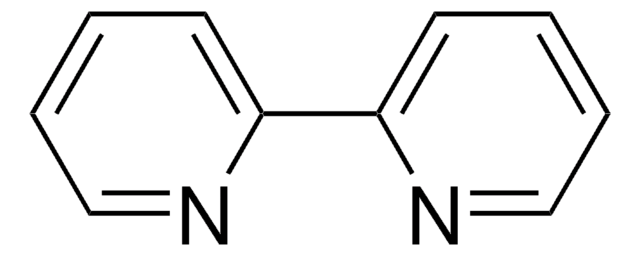추천 제품
vapor pressure
1 mmHg ( 487 °C)
Quality Level
분석
≥98%
양식
dust
반응 적합성
core: zinc
reagent type: catalyst
저항도
5.8 μΩ-cm, 20°C
입자 크기
<10 μm
bp
907 °C (lit.)
mp
420 °C (lit.)
density
7.133 g/mL at 25 °C (lit.)
SMILES string
[Zn]
InChI
1S/Zn
InChI key
HCHKCACWOHOZIP-UHFFFAOYSA-N
일반 설명
Zinc is an inexpensive, readily available versatile reagent in organic reactions and is commonly used as a reducing agent in organic synthesis. Zinc dust is used to reduce carbonyls, carbon-halide bonds, carbon-oxygen bonds, alkynes, and heteroatom bonds such as N-N and N-O bonds. It is also used to prepare various organozinc reagents. Additionally, Zinc has been used in several well-known named reactions, like the Reformatsky reaction, the Knorr pyrrole synthesis, the Serini reaction, and the Simmons-Smith cyclopropanation.
애플리케이션
Reducing agent; used for preparation of organozinc reagents, Reformatsky reagents, and the Simmons-Smith reagent (cyclopropanation).
Zinc is also used as a:
Zinc is also used as a:
- Reductant in the hydrothermal CO2 reduction to formic acid in batch reactors.
- Catalyst in the synthesis of propargylamines by one pot, three component coupling of aldehydes, amines and alkynes in acetonitrile.
신호어
Warning
유해 및 위험 성명서
예방조치 성명서
Hazard Classifications
Aquatic Acute 1 - Aquatic Chronic 1
Storage Class Code
11 - Combustible Solids
WGK
WGK 2
Flash Point (°F)
Not applicable
Flash Point (°C)
Not applicable
개인 보호 장비
Eyeshields, Gloves
이미 열람한 고객
자사의 과학자팀은 생명 과학, 재료 과학, 화학 합성, 크로마토그래피, 분석 및 기타 많은 영역을 포함한 모든 과학 분야에 경험이 있습니다..
고객지원팀으로 연락바랍니다.






